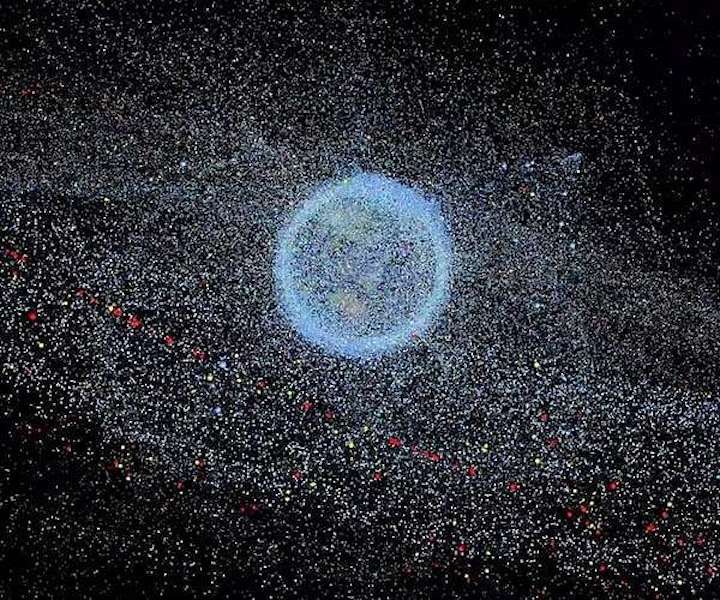25.04.2022

Proliferating levels of debris are posing a threat to the space environment and should be regulated as more satellites are being launched into space, researchers say.
Edinburgh University researchers said in a study published Friday in the journal Nature Astronomy the debris is troublesome, potentially affecting "professional astronomy, public stargazing and the cultural importance of the sky" to indigenous populations.
The situation can also damage "the sustainability of commercial, civic and military activity in space," according to the report.
The research stems from a brief submitted to the U.S. Court of Appeals last year supporting the positions of several organizations against a Federal Communications Commission order granting license amendments for SpaceX Starlink satellites.
Each satellite has a roughly 50% chance of a collision each year from untracked debris, and that risk rises dramatically with any increase in debris, researchers contended.
"We have laid out the argument for the urgent need for orbital space to be considered part of the human environment," requiring "environmental protection through existing and new policies, rules and regulations at national and international levels," the researchers wrote.
They urged decisionmakers and policymakers "to consider the environmental impacts of all aspects of satellite constellations, including launch, operation and de-orbit, and to work with all stakeholders to co-create a shared, ethical, sustainable approach to space."
Scientists have already spotted more than 30,000 items of space debris in Earth's orbit through surveillance networks, according to a European Space Agency report released Thursday -- and that amount has been rising.
In the last two years alone, there has been an enormous increase in the number of commercial satellites launched to near-Earth space, with the vast majority of them being small satellites.
"Many of these constellations are launched to provide communication services around the globe," the ESA said. "They have great benefits, but will pose a challenge to long-term sustainability."
The low-Earth orbit has become congested with increased traffic and "the long-lasting nature of space debris in low-Earth Orbit is causing a significant number of close encounters, known as 'conjunctions,' between active satellites and other objects," the agency said.
On a positive note, researchers noted some progress has been made with space debris mitigation measures during the last decade, including rockets burned up via controlled reentries after launch and others placed in orbits that naturally decay within 25 years.
But researchers made it clear that more needs to be done based on future projections.
"The extrapolation of the current changing use of orbits and launch traffic, combined with continued fragmentations and limited post mission disposal success rate could lead to a cascade of collision events over the next centuries," they warned.
Researchers said the most effective way to avoid more collisions is to follow guidelines developed by the Inter-Agency Debris Committee calling for the disposal of spacecraft safely at the end of the mission.
They also said that another necessary step is actively cleaning up the existing debris.
The Clearspace-1 mission planned to launch in 2026 will be the first mission to remove a piece of space debris from orbit -- a defunct rocket part that came from a 2013 launch.
While more satellites reaching the end of their missions are being disposed of responsibly, the researchers said there is still more work to be done.
"An increasing percentage of disposal attempts are successful, but too many are left drifting in important orbits with no attempt made to remove them," they said. "A successful removal rate of at least 90% for all types of space object is required to limit the growth rate of space debris, before we can start cleaning it up."
Quelle: SD
